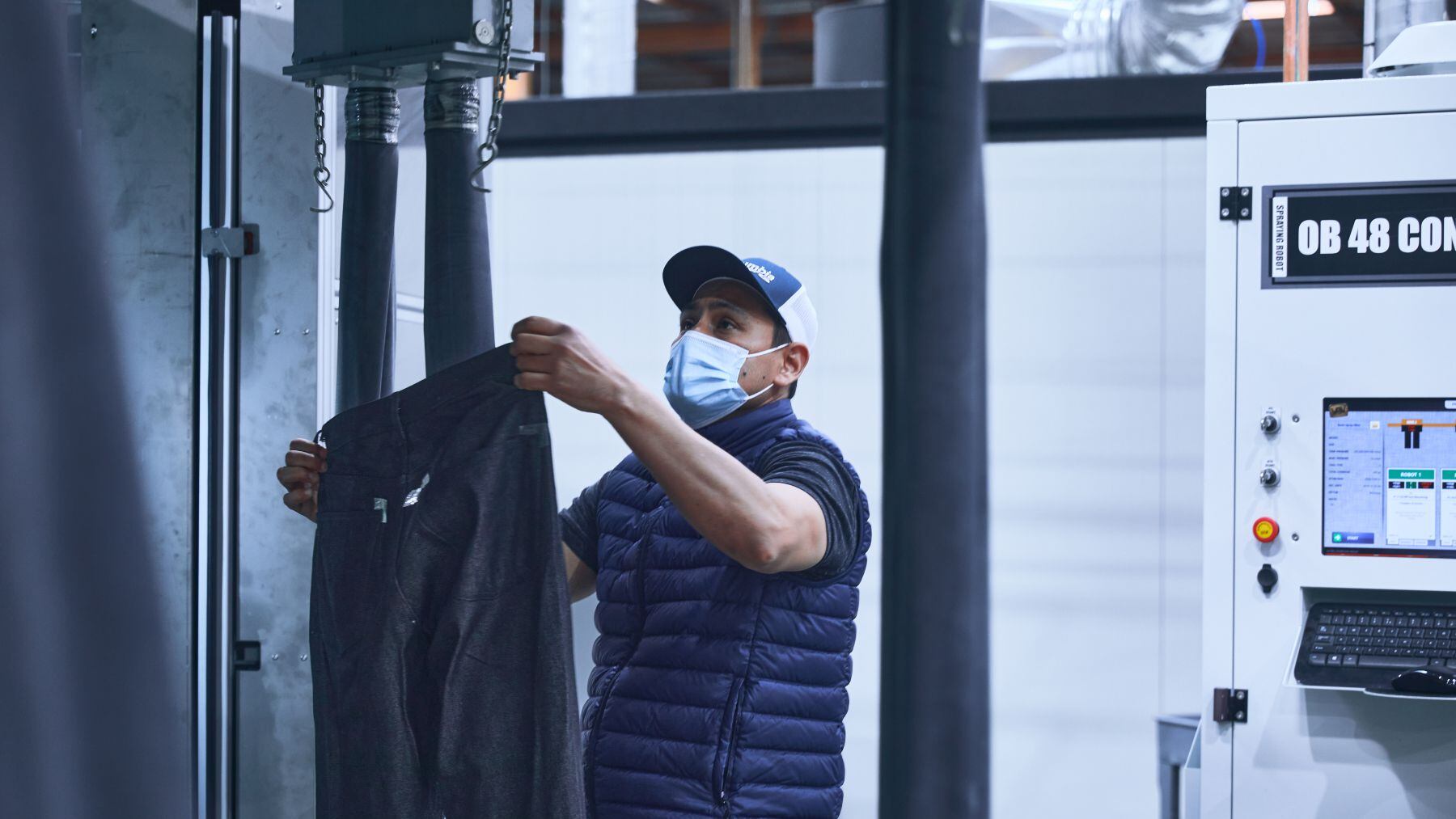
Unlike Saitex’s other denim factories in Vietnam and Los Angeles, which collectively crank out millions of pairs of jeans each year, the new one chief executive Sanjeev Bahl wants to build is purely virtual.
The factory would be a digital replica of the Los Angeles facility the denim manufacturer opened in 2021, and with it, Saitex could model the facility’s workflow in real-time.
“It would let you know how things are being made, how things are being done, but also [improve] process management on the front end,” Bahl said.
They’ve already begun blueprinting the factory for digitisation and expect to have the twin completed in four months. Another six months after that, it should be ready to go live.
That’s just phase one in Bahl’s plan. Phase two would entail digitising Saitex’s mill and the cotton farm it works with. Over time, it could create a full digital twin of its supply chain, and that’s when the model would become really powerful. With real-time data coming in, Saitex could use AI to optimise its operations, refining processes, minimising costs and increasing speed. When there’s a disruption, like a factory delay or a port closure, the AI would quickly work out the best alternative.
It’s an alluring idea for any company that has endured the turmoil of the past few years, though nobody in fashion has made it a reality — at least not yet.
A number of service providers are tackling different parts of the challenge. Noodle.ai is working on AI for the supply chain, for instance, and big tech players such as Google, Microsoft and Amazon are providing the cloud infrastructure for the digital models.
“The question will be, is there a single provider that gives you the whole thing? I don’t think there is,” said Andrew Hogenson, a logistics specialist and managing director at Infosys Consulting. “I think what you’ll end up with in two to three years is probably some more mature partnerships between pieces that work together, that have been implemented together, that become a viable solution for this.”
Hogenson said at least one large fashion brand he’s worked with was making significant progress in implementing a system of this sort, though the company hasn’t yet disclosed the information publicly so he couldn’t share the name.
Any company that could pull it off would have much greater visibility into its supply chain. Typically, a brand goes to a manufacturer like a cut-and-sew factory with an order and they agree on a delivery date. If the factory isn’t going to complete the order on time, the brand won’t know until they’re told, which might only be a week before the due date or less. But with a full view of its supply chain, it could see the warning signs and even backtrack to determine when the supplier needs to start working to complete the order on deadline. Theoretically, it could look further upstream and calculate when the supplier of the raw materials will need to have shipped them to the cut-and-sew factory.
With more certainty in their operations, brands can reduce their inventory on hand by cutting back on safety stock, according to Hogenson. They could adjust to disruptions faster and be able to keep partners better informed about when to expect inventory, or let them know earlier if there’s a delay.
“It’s a significant game changer,” Hogenson said.
Digital twins aren’t an entirely novel concept. Many accounts trace the idea’s origins to NASA’s Apollo 13 moon mission in 1970. After an oxygen tank on the shuttle exploded in space, NASA engineers created a replica of the craft and used the data they were receiving to model the situation, devise a solution and bring the crew safely home. It’s held up as a precursor to the practice of simulating complex systems with computers.
Other industries are also exploring the idea. BMW, for example, has teamed up with Nvidia to digitise its plant in Debrecen, Hungary.
But while using a digital twin to model fashion’s most complex system — the supply chain — is an intriguing idea, executing the idea isn’t easy. For it to work, companies would need to onboard their suppliers, meaning creating digital replicas of their operations and getting them onto a single data platform. That’s already a tremendous amount of work, and suppliers might not want brands tracking their output.
The situation is only complicated by the fact that suppliers aren’t often producing for just one brand. If another brand — or several other brands — wanted to implement the system, the supplier might have several platforms its customers are asking it to learn and use. Brands would also ideally not just get the factories cutting and sewing their clothes on the system, but those upstream as well that are producing the raw materials they use.
Bahl may have an advantage in making the system work for Saitex because it’s a manufacturer, not a fashion brand, with its own factories and its own mill.
His vision extends beyond just having all the factory operations feeding data into a digital platform. He imagines creating a full 3D replica of the factory a user could navigate online and is thinking of ways to monetise the digital replica itself, like renting it for virtual events.
Bahl acknowledges there will be obstacles including cost, expertise and time. But he believes once they’ve digitised the LA factory, they’ll be able to more easily digitise others by replicating it and making tweaks rather than having to start each one from scratch.
If Saitex or another company were able to do it, it would be a whole new virtual world for supply chains.
Stay connected with us on social media platform for instant update click here to join our Twitter, & Facebook
We are now on Telegram. Click here to join our channel (@TechiUpdate) and stay updated with the latest Technology headlines.
For all the latest Fashion News Click Here
